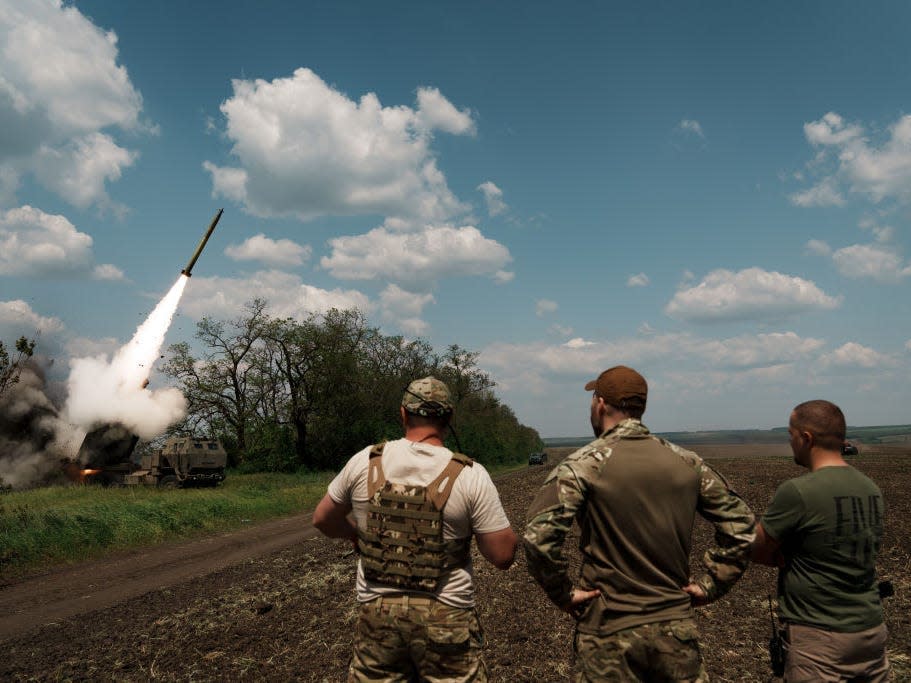A Ukrainian minister says she's frustrated by the West's inability to adapt its weapons to Russian tactics: report

Western-supplied weapons are having a diminished impact in Ukraine as Russia adapts its tactics.
A Ukrainian minister expressed frustration at the pace of adaptation, The Wall Street Journal reported.
But Western manufacturers have little incentive to adapt older weapons.
A Ukrainian minister has expressed concerns over the lack of adaptation in weapons being sent to Ukraine from the West.
Some weapons systems that were immensely effective when they were first deployed in Ukraine have since seen limited results or have even fallen by the wayside as Russian forces adapt their tactics to counter them.
Anna Gvozdiar, Ukraine's minister of strategic industries, told The Wall Street Journal that she was frustrated that these systems were not being adapted to catch up.
In contrast to this, she said Ukrainian forces "learn faster because we are on the front line."
Excalibur artillery rounds — which had a huge impact on Ukraine's fighting ability well into 2023 — had been all but abandoned by this spring after Russian forces repeatedly foiled them with advanced electronic warfare techniques, as The Washington Post reported.
A similar story has played out with US-made HIMARS missiles, whose precision has also been somewhat blunted, the Journal reported.
Ukraine has also given up using Ground-Launched Small Diameter Bombs, pending a review, according to the Journal.
Sent to Ukraine with some fanfare in February, by this spring their effectiveness was already on the wane, again due to Russian jamming, Reuters reported.
It could take months for manufacturers Boeing and SAAB AB to create a fix, one source told Reuters.
Despite Gvozdiar's complaint, there is little incentive for US manufacturers to try to adjust their weapons to this rapidly changing battlefield.
Many of them are older stocks that are being phased out of the US' inventories anyway, the Journal reported.
Over the course of its invasion of Ukraine, Russia has developed increasingly sophisticated jamming methods at a pace that far outstrips the current capabilities of the US, former Pentagon officials have previously warned.
Russian forces have also been able to adapt to threats by moving logistics sites out of range of some munitions, albeit at a cost to their efficiency.
Experts have told Business Insider that the problem of this fading usefulness of allied weapons on the Ukrainian battlefield is compounded by the piecemeal manner of their delivery.
"Weapons systems have been consistently released to Ukraine too late to have their optimal effect, and also have often been trickle fed," Justin Bronk, an air power expert at the Royal United Services Institute, told BI.
"By the time they're available in larger numbers, the Russians have had time to adapt," he said, adding that it was a particular problem during the counteroffensive of 2023, but is still "at play" now.
Some weapon systems are still proving their worth, such as ATACMS and the UK- and France-supplied Storm Shadow cruise missiles, the Journal reported.
But Russia can ultimately be expected to adapt to those, too.
Some Western governments are taking note. In January, the Swedish government launched an initiative to speed up its weapon manufacturers' response to developments in Ukraine, according to the Journal.
Read the original article on Business Insider


